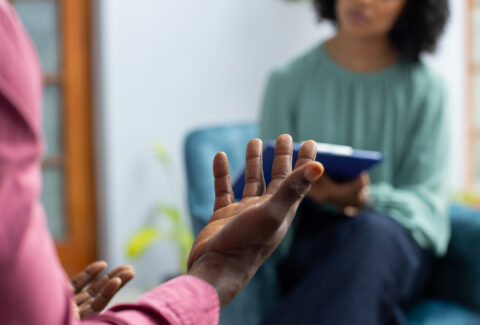The Art and Science of Family Sculpting in Therapy
In the realm of family therapy, where words can sometimes fall short, there exists a powerful technique that transcends language barriers and delves straight into the heart of familial relationships. Enter family sculpting – an innovative approach that harnesses the power of physical representation to illuminate the intricate dynamics and connections within family systems.
What is Family Sculpting?
Family sculpting[1], also known as family constellations or family mapping[2], is a therapeutic technique that involves physically positioning family members or objects in space to represent their relationships, roles, and emotional dynamics. Developed by Virginia Satir[3] and further popularized by Salvador Minuchin, family sculpting provides a tangible and experiential way for clients to explore and understand their family systems.
The Artistry of Sculpting
At the heart of family sculpting lies the artistry of representation. In a therapy session, family members are invited to physically position themselves or objects in a designated space, with the therapist guiding the process. Each family member’s placement, posture, and proximity to others convey valuable information about their roles, emotions, and relational patterns within the family system.[4]
Crafting Connections
Through family sculpting, clients gain insight into the complex web of connections that shape their family dynamics. By observing the spatial arrangement of family members and the interactions between them, clients can identify patterns of communication, power dynamics, and emotional bonds that may be influencing their relationships.[5] This heightened awareness allows clients to explore and challenge entrenched patterns, fostering greater understanding and empathy among family members.
Bridging the Gap
One of the key strengths of family sculpting is its ability to bridge the gap between conscious awareness and unconscious processes within the family system. As clients engage in the sculpting process, they may uncover hidden emotions, conflicts, or dynamics that were previously unexplored or unrecognized. By bringing these hidden elements to light, family sculpting facilitates deeper insight, communication, and healing within the family.[6]
Creating New Narrative
Another powerful aspect of family sculpting is its capacity to create new narratives and possibilities within the family system. As family members physically reposition themselves or objects in space, they have the opportunity to experiment with alternative roles, boundaries, and interactions. This process opens the door to new ways of relating and communicating within the family, empowering clients to rewrite their family story and create a more positive and cohesive future.[7]
The Therapeutic Journey
Ultimately, family sculpting is a transformative journey of exploration, discovery, and growth. Through the creative expression of physical representation, clients gain new perspectives on their family dynamics, deepen their connections with one another, and embark on a path of healing and transformation. As they sculpt their way towards greater understanding and resilience, families emerge stronger, more cohesive, and better equipped to navigate life’s challenges together.
In conclusion, family sculpting stands as a testament to the transformative power of art and creativity in therapy. By crafting connections and sculpting new narratives, families embark on a journey of healing, growth, and empowerment. As therapists and clients come together to explore the intricate tapestry of family dynamics, they pave the way for deeper understanding, empathy, and connection within the family system.
[1] Hale, Jane V. “Making a “Choice”: Using Family Sculpting in Family Separation Groups.” The Group Therapist’s Notebook. Routledge, 2017. 123-130.
[2] Harcourt, Kate Taylor, and Francesca Adler-Baeder. “Family mapping: A cumulative measure of family structure and instability.” Journal of Divorce & Remarriage 56.3 (2015): 199-219.
[3] Brothers, Barbara Jo. Virginia Satir: foundational ideas. Routledge, 2013.
[4] Sherman, Robert, and Norman Fredman. Handbook of structured techniques in marriage and family therapy. Routledge, 2013.
[5] Faddis, Troy J., and Katherine F. Cobb. “Family therapy techniques in residential settings: Family sculptures and reflecting teams.” Contemporary Family Therapy 38 (2016): 43-51.
[6] Lawson, Ann. “When Words Fail.” 101 Interventions in Family Therapy. Routledge, 2014. 303-308.
[7] Watson, Deborah. “Sculpting Narratives: Experiencing Positive Narratives in Therapy.” The Therapist’s Notebook for Children and Adolescents. Routledge, 2015. 282-288.







